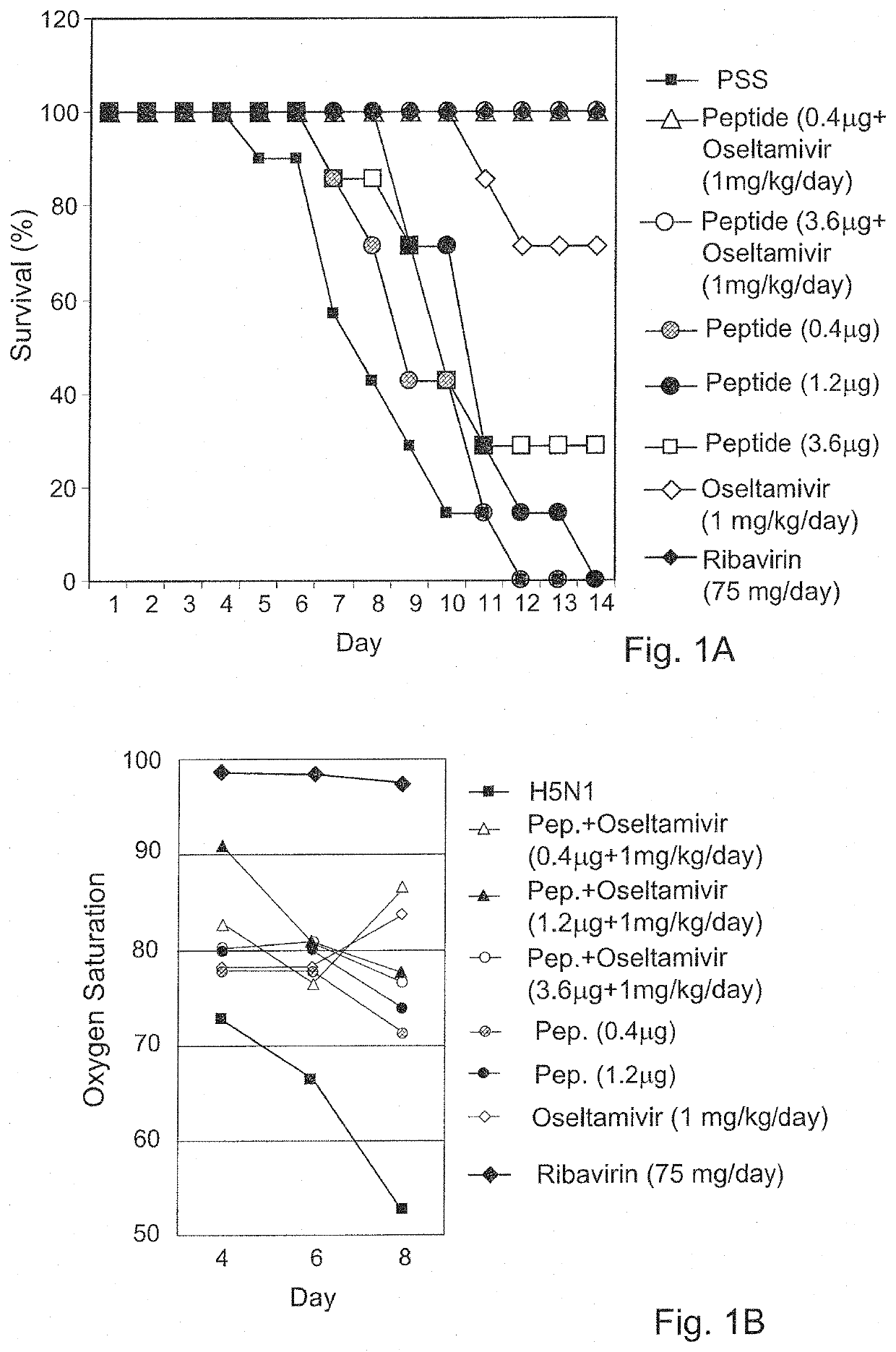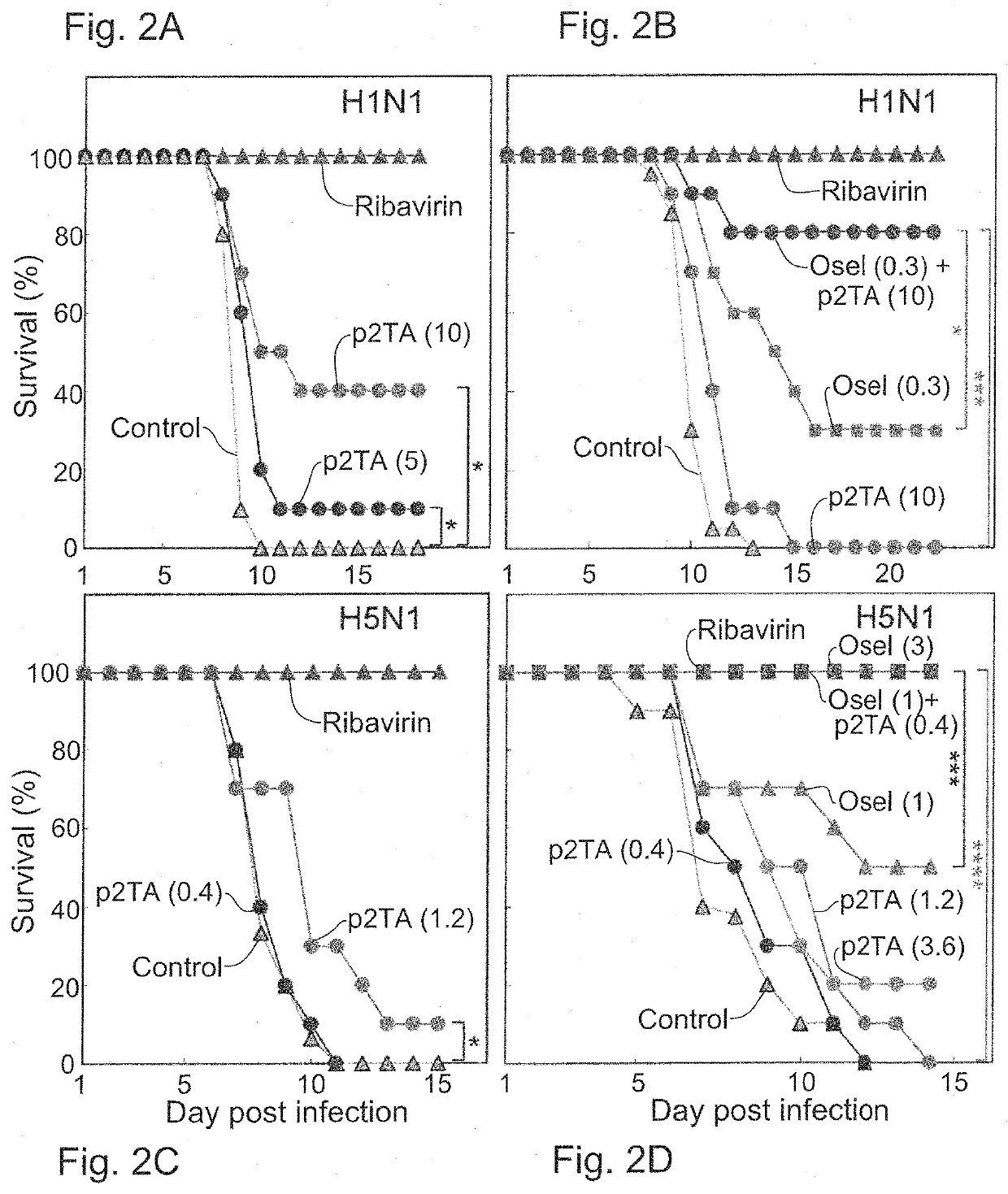Peptides for use in the treatment of viral infections
- Summary
- Abstract
- Description
- Claims
- Application Information
AI Technical Summary
Benefits of technology
Problems solved by technology
Method used
Image
Examples
example 1
Protection from Lethal H5N1 Avian Influenza Infection by CD28 Dimer Interface Peptide
[0255]As indicated above, current strategies for therapy of H5N1 infection focus mostly on neuraminidase inhibitors such as the FDA-approved antiviral Oseltamivir, yet the virus mutates rapidly to become resistant. Treatments aimed at manipulating the host immune system to interfere and prevent cytokine storm initiated by activation of pro-inflammatory Th1 cells by an antigen derived from a viral pathogen such as H5N1, as well as combination therapy targeting virus and host at the same time, may have greater potential in controlling and preventing cytokine storm associated disorders.
[0256]Therefore the inventors examined whether the inhibition of superantigen induced Th1 cell activation by short peptides derived from the dimer interface of human CD28 may reduce or prevent cytokine storm caused by Th1 cytokines, and may thus be used for treatment and prophylaxis of cytokine-storm related disorders.
[0...
example 2
Protection from Lethal H1N1 Swine Influenza Infection by the CD28 Dimer Interface Peptide p2TA
[0259]The antiviral activity of the p2TA peptide against an additional influenza strain, H1N1, was also assessed. Mice were infected intranasally with a lethal dose of pandemic H1N1 influenza A virus (H1N1 / A / California / 04 / 09 influenza, 3 LD50) and survival was monitored in infected BALB / c mice (18-20 g, n=15 for the untreated groups (Control) and n=10 for the treated groups). Starting from time 0 on day 0, treatment was performed as described below on days 0-4 post infection, twice daily, 8 hours apart. The peptide p2TA was administered intraperitoneally, at doses of 5 or 10 μg per mouse. The agent Oseltamivir (Osel) was administered per os, at 0.3 mg / kg. The agent ribavirin served as a positive control, administered intraperitoneally at 75 mg / kg.
[0260]When administered only from the time of infection through day 4 post infection, the peptide p2TA, which is not an antiviral agent by itself,...
PUM
| Property | Measurement | Unit |
|---|---|---|
| Temperature | aaaaa | aaaaa |
| Time | aaaaa | aaaaa |
| Time | aaaaa | aaaaa |
Abstract
Description
Claims
Application Information
 Login to View More
Login to View More - Generate Ideas
- Intellectual Property
- Life Sciences
- Materials
- Tech Scout
- Unparalleled Data Quality
- Higher Quality Content
- 60% Fewer Hallucinations
Browse by: Latest US Patents, China's latest patents, Technical Efficacy Thesaurus, Application Domain, Technology Topic, Popular Technical Reports.
© 2025 PatSnap. All rights reserved.Legal|Privacy policy|Modern Slavery Act Transparency Statement|Sitemap|About US| Contact US: help@patsnap.com



